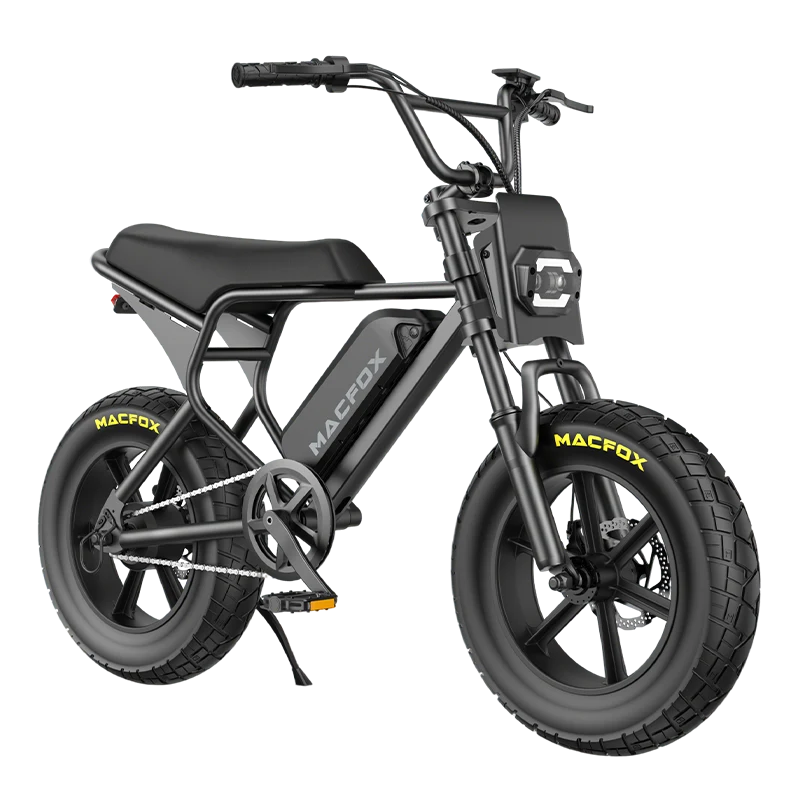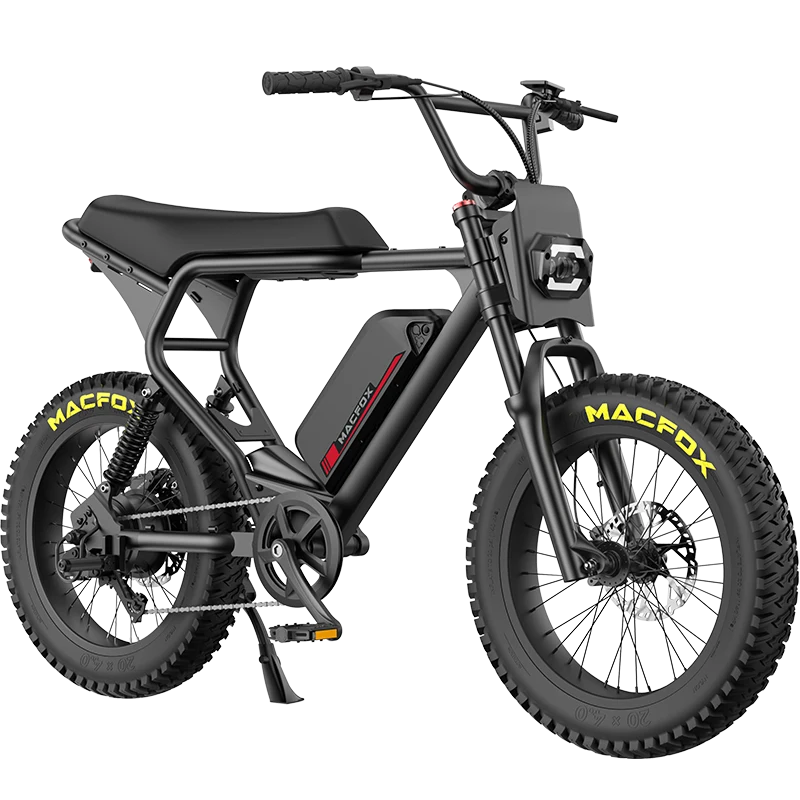E-bike classes serve to categorize electric bikes according to features, power, and speed, making it easier for users to understand what each bike can do and where they should ride it. From hitting trails to city commutes or just leisurely rides around town, knowing your e-bike's class is essential for making sure it suits both your needs and local regulations on various paths.
Selection of the correct class (Class 1, 2, or 3) depends on how you intend to use your bike. Are you seeking a smooth, assisted ride, need extra speed for commuter purposes, or perhaps looking for something that allows both urban streets and off-road trails?
This article will take you on a tour through each e-bike class, explaining their features and helping you select one that matches with your riding style and lifestyle.
Class 1 Electric Bicycles
The Class 1 electric bikes are great for cyclists who prefer the feel of a traditional bicycle but with a bit of help when things get difficult.
The pedal-assist system provides an easy, gentle boost that comes on as you pedal, allowing you to overcome windy hills without putting on sweat.
Consider it as a friend who helps you ride more comfortably but doesn't diminish the fundamentals of cycling.
If you're an occasional biker or someone who wants to keep active while traveling, class 1 electric bikes are a must.
They're great for leisurely trails, parks, and short urban trips.
Additionally, their ability to use all standard bicycle paths without any special rules or limitations makes them a convenient choice for the majority of cyclists.
For those who want some assistance but do not have a complete shortcut, Class 1 e-bikes are an ideal balance.
Key Features:
- Pedal Assistance: Yes
- Throttle: No
- Max assisted speed: 20 mph
- Speedometer: Not mandatory
- Ideal for: Casual riders, parks, short commutes, light off-road
Class 2 Electric Bicycles

Class 2 e-bikes go one step further by the addition of the ability to throttle.
This means that you don't need a pedal to start the motor.
For riders who don't need to sweat, whether due to physical restrictions or a desire for a relaxing ride, Class 2 e-bikes make urban commutes easy.
These bikes shine in urban environments in which stopping and starting often is the norm.
The throttle offers instant acceleration, which is ideal for navigating traffic or maneuvering through busy streets.
While they're not as speedy as Class 3 electric bikes, their simplicity and comfort make them ideal for those who value comfort over speed.
It's basically a motorized bicycle that takes the user from point A to point B with a minimum of effort.
Key Features:
- Pedal Assistance: Yes
- Throttle: Yes
- Max assisted speed: 20 mph
- Speedometer: Not mandatory
- Ideal for: Urban commuting, city streets, casual riders, avoiding physical strain
Macfox's X1 Electric Commuter Bike For instance, it is an e-bike in Class 2 that can reach speeds of up to 25 mph and is a great alternative for speedy and efficient daily commuting.
Class 3 Electric Bicycles

Class 3 e-bikes are designed for those who desire more from their e-bikes, whether it's for a faster commute or just the excitement of speed.
These bikes can reach speeds of up to 28 MPH, allowing you the freedom to travel faster and cover greater distances in a shorter amount of time.
This makes them perfect for commuters who must be on the road quickly without relying on crowd-squeezed public transportation or sitting in traffic.
However, with increased speed comes more responsibility.
Depending on the location you live in depending on where you live, depending on where you live, Class 3 electronic bikes could have particular legal requirements, like age limits or helmet laws.
These regulations guarantee safety since faster speeds bring greater risks.
For the committed cyclist or those who want to speed, Class 3 e-bikes can provide the speed and efficiency that separate them from the crowd.
Key Features:
- Pedal Assistance: Yes
- Throttle: No
- Max assisted speed: 28 mph.
- Speedometer: Mandatory
- Ideal for: Fast commuting, long-distance riders, speed enthusiasts, city-to-suburb cycling

Comparing Class 1, Class 2, and Class 3: Which One Fits Your Life?
The decision between Class 1, Class 2, and Class 3 isn't only about speed. It's about how each will fit into your life.
Class 1 is ideal for those looking for an easy, classic bike experience but with a tiny boost.
Class 2 allows riders to bike without pedaling, which is ideal for urban environments or those who have mobility issues.
Class 3 is designed for commuters who want speed and efficiency and aren't afraid of some additional legal obligations that go along with it.
The final decision boils down to the type of cycling you use the most often.
Are you looking for a bicycle that allows you to ride further, faster, or more comfortably?
Understanding the intricacies of each class can assist you in choosing the bike that best suits your needs and not only your preferred speed.
How Do I Convert My Class 2 Ebike to Class 3?
If you're thinking of upgrading your e-bike from a Class 2 to a Class 3 model for faster speeds or greater performance, it is necessary to modify specific components. This usually involves:
- Upgrade the motor so that it can support higher speeds.
- Modifying the controller so that it can allow for faster speeds or greater power.
- Change the speed limiter's setting to eliminate the limit on the maximum speed that can be assisted. Be aware that these modifications may affect the legal condition of your bike according to local regulations.

Do I Need a License to Ride an Electric Bike?
In most areas you don't require to have a permit to use an electric bike however there are a few exceptions based on the class as well as local regulations.
For instance, Classes 1 and 2 e-bikes aren't required to have approval in all regions.
However the Class 3 e-bikes, because of their higher speeds, might require special permits or age restrictions and you may have to wear a helmet as per law.
To find out more about licensing requirements, read my entire blog post about whether you require a permit to ride an electric bicycle here.
How Do I Tell What Class Ebike I Have?

To determine the classification of your e-bike, look at the following:
- Pedal-assist in contrast to. throttle: Does your bike require pedaling to start the motor or can you operate the use the throttle and pedal without pedaling?
- Speed limit: is your bike limited to 20 mph (Class 1 or 2), or is it able to be pushed to a speed of 28 miles per hour (Class 3)?
- Motor power: Typically, e-bikes in Class 3 are more powerful than those belonging to Class 1 and 2.
If the bike you own is registered, the class must be listed in the documentation.
Conclusion
Selecting the right e-bike type is ultimately dependent on your way of life and how you intend to make use of the bike. If you're looking for a relaxing ride with a little help (Class 1) or a throttle-controlled easy urban commute (Class 2) or the thrill and power of faster speed (Class 3) Each class has its own advantages.
By understanding the main distinctions and taking into consideration your particular requirements, you can make an informed choice that is not only compatible with your cycling routine but also improves your overall experience on the roads.
Be aware that no matter what category you choose, electric bikes are an exciting and eco-friendly alternative to traditional commutes as well as recreational cycling. So, choose the one that is compatible with your goals and begin enjoying the convenience and freedom that electric bicycles offer today!
The article was last updated on December 11, 2025.


















